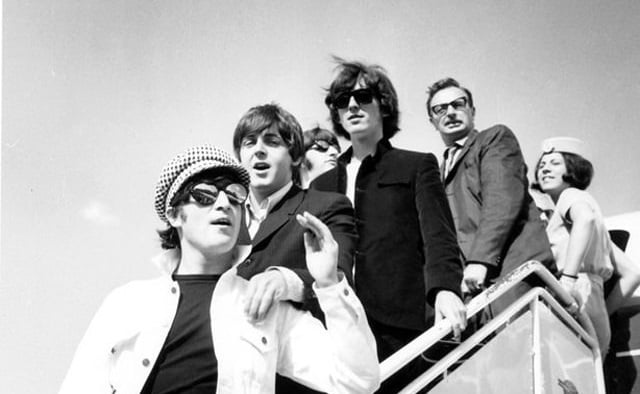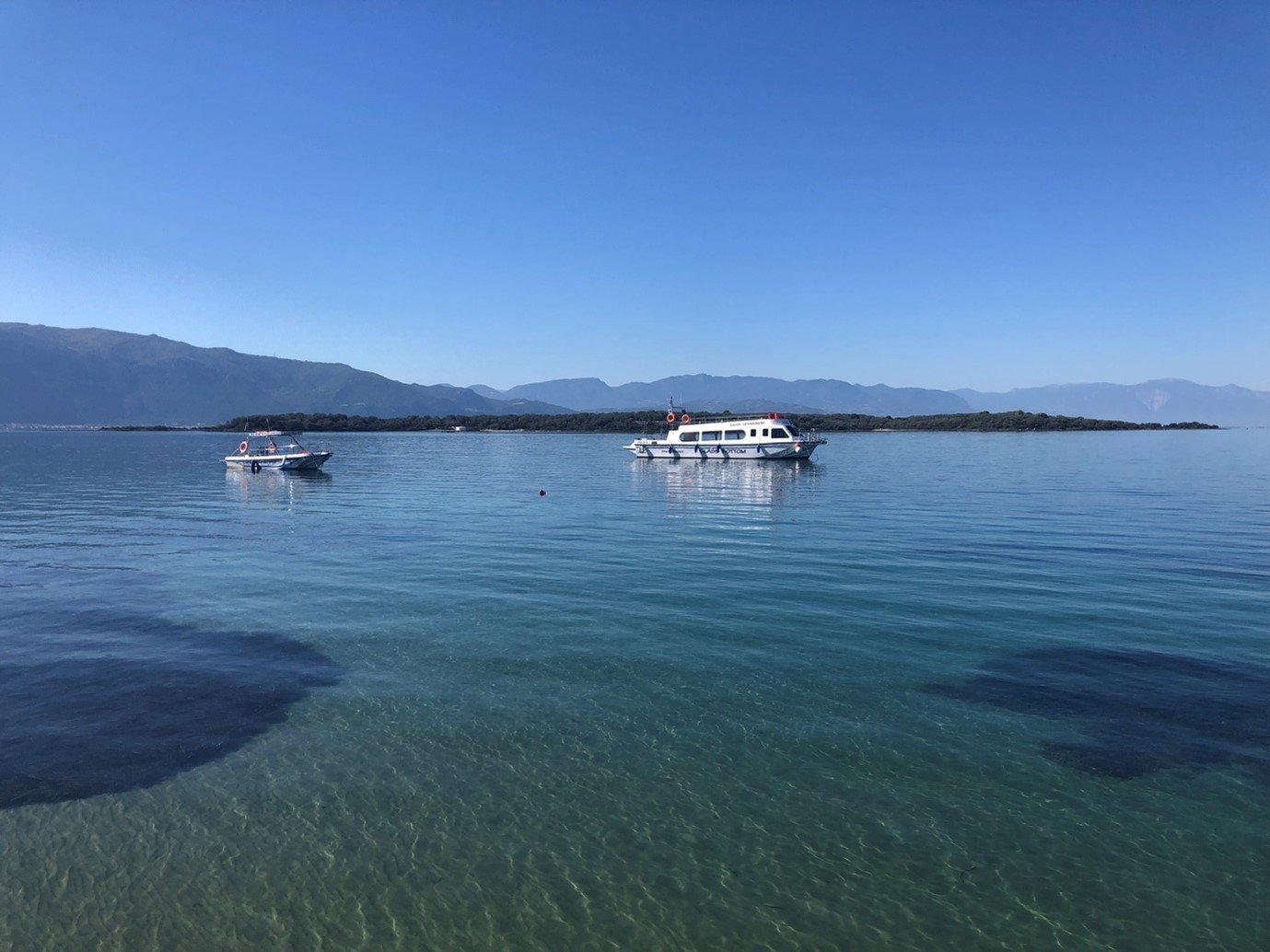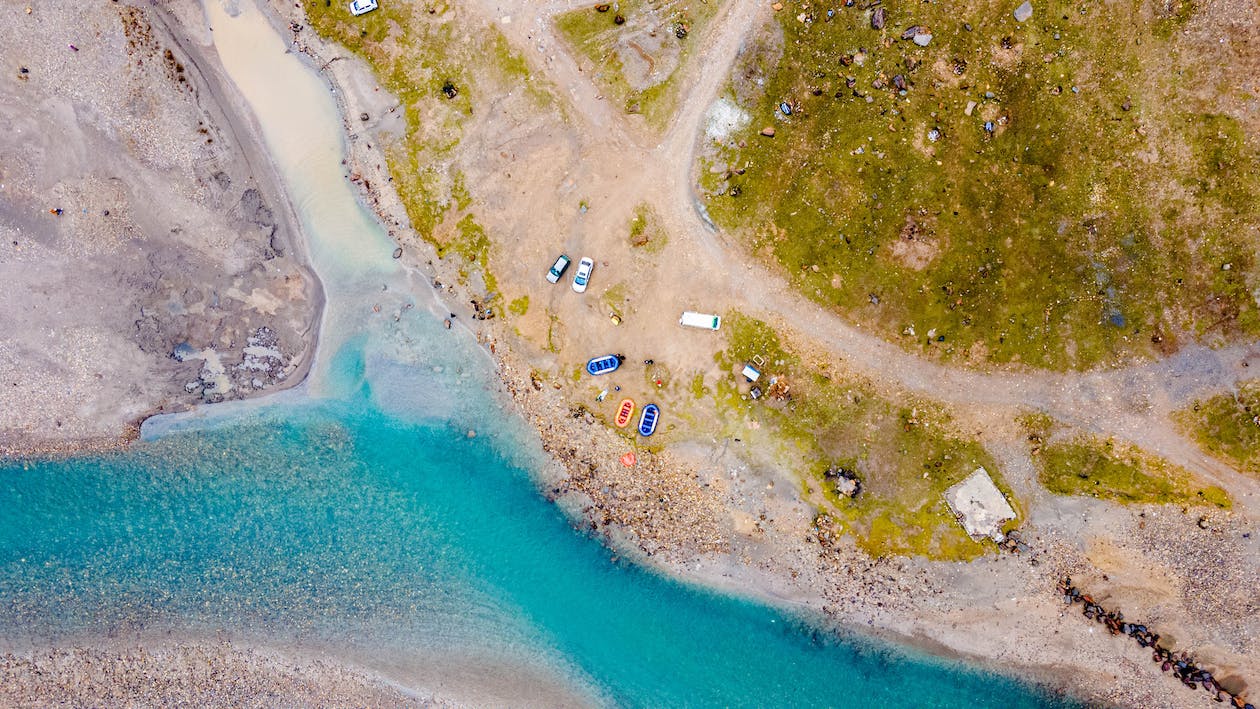
More than fifty years ago, the Beatles travelled to Greece with the aim of buying an island.
By Jonathan Knott
In July 1967, the Beatles were ascending new heights of fame and creative capacity. They had recently released the groundbreaking album Sgt. Pepper’s Lonely Hearts Club Band to widespread acclaim and had become figureheads for the hippie movement that was then reaching its zenith with the Summer of Love.
But the group were also feeling restless. Frustrated with the constraints of live touring and their manufactured public personas, they were exploring new horizons – not infrequently under the influence of LSD. Among the various outlandish ideas they came up with at this time was to buy a Greek island where they could “drop out” (in George Harrison’s words), take drugs, and make music away from the public gaze.
The Beatles’ obscure dream of owning an island in Greece
As it turned out, this vision was not merely an idle dream. It came surprisingly close to being realized. The Beatles did indeed – together with their partners and a few close members of their inner circle – visit Greece that summer with the aim of acquiring an island. They identified one they wanted and began to clear the various official hurdles to buying it. Due to financial rules at the time, this included obtaining permission from the British government and purchasing a special property currency. A few months later, however, the group abandoned the plans.
No one disputes the basic outline of these events. They’re discussed in a number of books about the Beatles, and there are various photos and video clips around showing glimpses of the group in Greece. However, many details about what happened, such as where exactly the group went, or which island they wanted, remain obscure. I’ve been fascinated by various puzzling aspects of this story ever since I first heard more than ten years ago. In my Substack newsletter, Follow the Sun, I’ve been sharing what I’ve been able to discover about it.
Last year, I came across some articles from July 1967 in the Greek newspaper To Vima, containing daily reports about the group’s movements. Together, these suggest a detailed and plausible route for the group’s cruise in Greece, including a number of specific locations, which I’ve never previously seen discussed.
Arrival in Athens
According to these reports, the first of the group to arrive in Greece were George Harrison and Ringo Starr. On July 21st, the newspaper reported that the pair had been spotted in Athens the previous day, noting the former’s outfit of orange trousers, a flowery shirt, and a striking blue jacket. The next day, another article says the two Beatles travelled in a Mercedes to Vouliagmeni beach on the outskirts of the city, where for about three hours “they swam, ate fruit and sunbathed.”
On July 23rd, To Vima’s coverage of the Beatles became more prominent, with an exclusive article on page four headlined “In the Beatles’ bolthole.” The article reports that John Lennon and Paul McCartney had arrived in Athens the previous afternoon. The former is described as wearing “smart glasses, a shirt decorated with red and yellow flowers, and corduroy trousers,” and the latter a long ‘Nehru’ jacket. The two were greeted at the airport by a young blond man with a moustache and dressed in “super-modern attire.” This surely refers to Alexis Mardas, the Beatles’ Greek friend who had helped to arrange their trip and whose family was hosting the group in Athens.
The article also features comments from Ringo and George relaxing at an “elegant villa” – presumably belonging to the Mardas family, which To Vima had located in an Athenian suburb (named in a later article as Papagou) following a five-hour search. The two Beatles were spending carefree hours “lying comfortably in the coolness of the veranda, among the flowers of the villa’s garde.” According to the article, they told the newspaper: “It is true that we are thinking of buying a plot of land on an island and building villas. But we have not reached a final decision yet.”
This article is bylined “L. Tsirigotakis,” presumably referring to Labis Tsirigotakis, who was at that time a reporter for To Vima, and who would later become a well-known London-based correspondent for Greece’s state broadcaster ERT. Two days later, the newspaper published another article by Tsirigotakis on a day trip north of Athens by the Beatles and their companions on Sunday, July 23rd.
The report says that the group’s party first visited the mountain village of Arachova, where they danced on a rooftop with local people, accompanied by an ensemble of traditional Greek instruments. After being given an array of gifts, in the early evening, the group visited the nearby beach at Itea before later heading to Delphi, the ancient sacred site with an amphitheater. They had been due to see a play there, but the “exhausted” group scrapped these plans and returned to their Athens base.
The Beatles cruise the Greek islands
After their stay in Athens, the group began their cruise around islands. This was also reported on by To Vima. While a number of articles and books cover the Beatles’ day trip on July 23rd, To Vima’s reports are the only source I’m aware of that provide details of the route of the cruise itself. Most of these articles are bylined either “L. Tsirigotakis” or “L.T.,” suggesting that Labis Tsirigotakis was again most likely the author. They indicate that the group took a route north up the Evian Gulf before later heading to the Sporades islands and back to Athens.
According to To Vima, the Beatles embarked on their cruise on Monday, July 24th without Ringo Starr, who was returning to London to be with his pregnant wife. By July 26th, the group and their companions had reportedly reached the northern tip of the Evian Gulf, an area rich with thermal mineral springs. The newspaper says the group bathed at Kamena Vourla on the mainland, and ate at “a secluded place” on the other side of the gulf at Edipsos on Evia.
The article does not tell us whether the Beatles also took some time to bathe in the steaming springs at Edipsos, where the sulphurous water colors the rocks yellow. If they did, they would have been joining a long line of distinguished travellers since ancient times from Roman Emperors to Winston Churchill and Greta Garbo.

The Beatles’ possible cruise route in 1967
What we are told is that on Thursday, July 27th, the group visited the pine-covered island of Skiathos just north of Evia. The area is blessed with an array of picturesque beaches. But this stop did not go to plan, as the group found themselves unable to maintain their anonymity. They first visited the island’s jewel – the long curve of golden sand at Koukounaries.
But no sooner had they stepped off their hired yacht, the Beatles were recognized, and onlookers soon began to clap and cheer “in the familiar hysterical way.” Thus, Alexis Mardas drove them to an isolated beach, where they played in the sand and swam before going back to the boat to eat. Despite this setback, the newspaper says that Skiathos particularly appealed to John Lennon and his wife, Cynthia. They planned to return the following year.

The following day, To Vima says the Beatles visited other islands near Skiathos and “passed close to the island that was proposed to them to buy.” They stopped at all the main islands in the Sporades group, spending hours on both Alonissos, where they ate lunch, and Skyros, where they went for walks throughout the whole island and bought souvenirs and presents. They also visited Skopelos, which they “enjoyed…a lot.”
The yacht that the Beatles were travelling on arrived back in Athens’ Tourkolimano (today called Mikrolimano) harbor in the afternoon of Saturday, July 29th, according to the newspaper, with the Beatles due to fly back to London on July 30th or 31st. We are told in other accounts that most of the party returned on the latter.
Which island did the Beatles want?
Knowing the apparent route of the Beatles’ cruise gives us some clues about which island, or islands, the group may have been interested in. In fact, the trip as reported by To Vima could easily have included three separate islands that can be plausibly connected to the group.
The Greek island most often linked to the Beatles is Agia Triada (Holy Trinity), which sits in the Evian Gulf close to the town of Eretria on Evia. It is not mentioned in any of To Vima’s reports, but would have been an easy stop-off on the route north up the Evian Gulf towards Kamena Vourla and Edipsos. A member of the family that owns the island told me that the Beatles did indeed visit Agia Triada in the mid-sixties, but while they may have been interested, it was not for sale.
Another plausible candidate for the group’s interest is Tsougria, a small, green island close to Skiathos. Tsougria is mentioned in a report on the Beatles’ trip in a different Greek newspaper (Makedonia) with Paul McCartney reportedly stating that while the group “wanted to buy” the islet, “they are no longer selling it to us.”
It also seems likely that Tsougria was the island near Skiathos “proposed to [the group] to buy” mentioned by To Vima. But the Makedonia article is clear that the island would not be sold. We are told this was because the Greek Ministry of Agriculture stepped in to prevent this from happening.
Hence, if the Beatles were indeed interested in either Agia Triada or Tsougria, it seems to have quickly become clear that neither was available. In addition, neither of these islands match descriptions we have of the one the Beatles wanted. A number of accounts in books say the group were interested in an island about eighty acres large, surrounded by several smaller islands.
The Lichadonisia islands
The Beatles’ application to the British government for permission to buy the island, held in the UK’s National Archives, is broadly in line with these. Though it does not state an overall size, it says the island had three hundred thousand square metres (seventy-four acres) of arable land and it also refers to five smaller offshore islands.

While these details do not closely match either Agia Triada or Tsougria (which are 12 and 290 acres large respectively), they do resemble the Lichadonisia archipelago off the northern tip of Evia. The largest island in this group, Monolia, is about 85 acres big, and very close to a number of smaller islands. Monolia also has other features mentioned in some descriptions, such as several houses, olive groves, and a gently curving bay.
What’s more, the 1995 documentary The Beatles Anthology includes images of an island that looks very similar to Monolia. And having visited the Lichadonisia myself, I can see how they might prompt rapturous reactions such as those provided in some accounts (the Beatles’ ‘Mr Fixit’ Alistair Taylor described the chosen islands’ location as “paradise”). While easily accessible from mainland Greece, the archipelago has a remote and other-worldly feel.
Finally, the Lichadonisia are close to two places that, according to To Vima, the Beatles definitely went to: Edipsos and Kamena Vourla. They are a fifteen-minute boat trip from the latter.

Plans fall through
The timing of the negotiations over the sale is another significant factor. The archive correspondence indicates that the Beatles’ initial application for permission was not made until July 25th, when the Beatles were already in Greece, and officials were not informed that the plans had fallen through until the end of October 1967. A note on October 30th from a Bank of England official says that while negotiations did proceed, the group was “advised of certain legal difficulties and of additional sums required” and therefore decided “not to go ahead with the purchase.”
It is certainly plausible that the Beatles were at one point interested in either Agia Triada or Tsougria, or both. But if so, these prospects were apparently quashed while the group were still in Greece. Where was the spot, then, that was apparently the subject of substantial subsequent negotiations? In my opinion, the evidence points towards the Lichadonisia.
Jonathan Knott is a journalist and travel writer based in London. He writes the Substack newsletter Follow the Sun, about the Beatles’ Greek island plans and their historical context.
See all the latest news from Greece and the world at Greekreporter.com. Contact our newsroom to report an update or send your story, photos and videos. Follow GR on Google News and subscribe here to our daily email!



